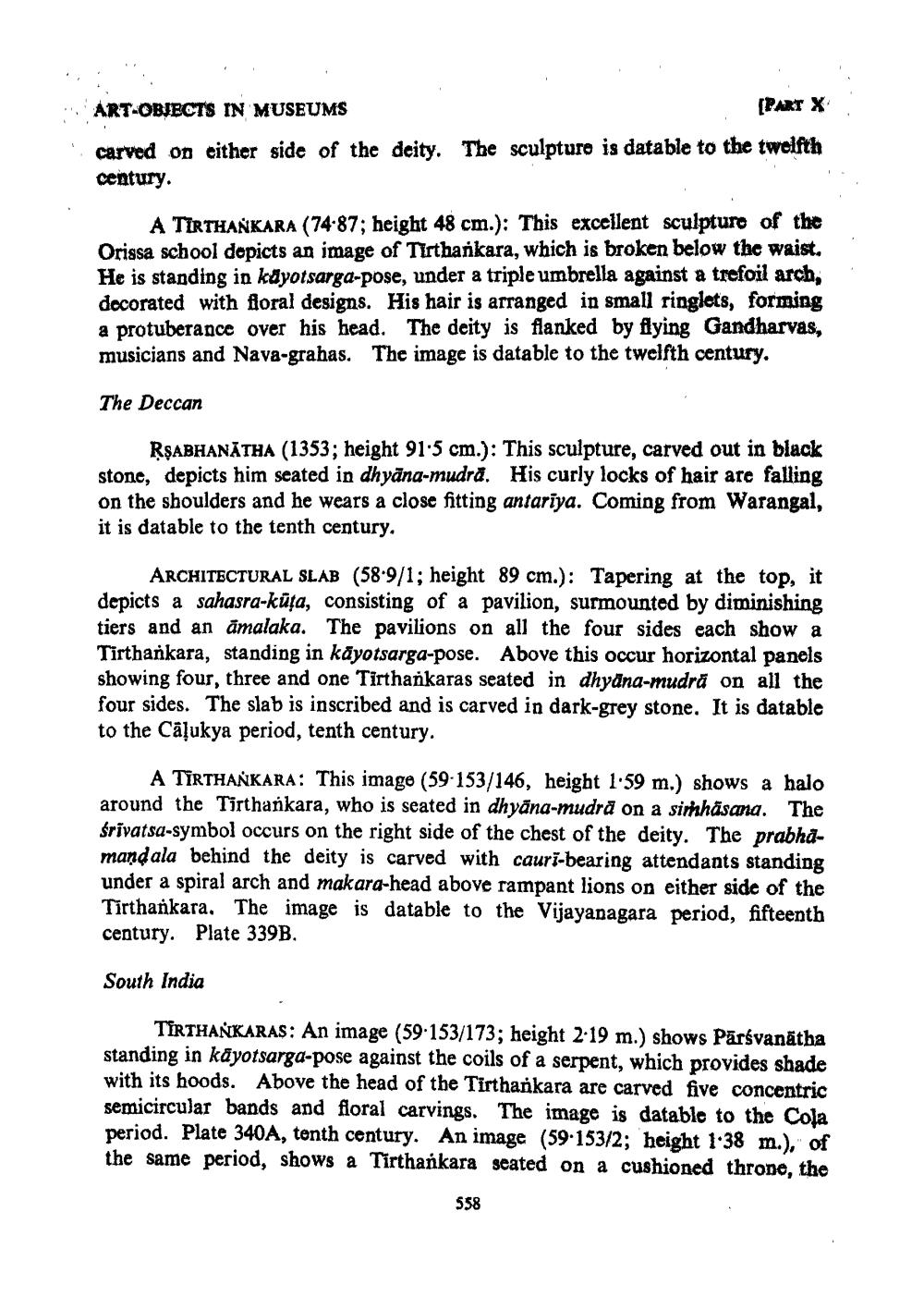________________
ART-OBJECTS IN MUSEUMS
[PART X carved on either side of the deity. The sculpture is datable to the twelfth century.
A TIRTHANKARA (74-87; height 48 cm.): This excellent sculpture of the Orissa school depicts an image of Tirthankara, which is broken below the waist. He is standing in kayotsarga-pose, under a triple umbrella against a trefoil arch, decorated with floral designs. His hair is arranged in small ringlets, forming a protuberance over his head. The deity is flanked by flying Gandharvas, musicians and Nava-grahas. The image is datable to the twelfth century.
The Deccan
ṚŞABHANATHA (1353; height 91-5 cm.): This sculpture, carved out in black stone, depicts him seated in dhyana-mudra. His curly locks of hair are falling on the shoulders and he wears a close fitting antariya. Coming from Warangal, it is datable to the tenth century.
ARCHITECTURAL SLAB (58-9/1; height 89 cm.): Tapering at the top, it depicts a sahasra-kūta, consisting of a pavilion, surmounted by diminishing tiers and an amalaka. The pavilions on all the four sides each show a Tirthankara, standing in kayotsarga-pose. Above this occur horizontal panels showing four, three and one Tirthankaras seated in dhyana-mudra on all the four sides. The slab is inscribed and is carved in dark-grey stone. It is datable to the Câlukya period, tenth century.
A TIRTHANKARA: This image (59 153/146, height 1:59 m.) shows a halo around the Tirthankara, who is seated in dhyana-mudra on a sirkhasana. The Srivatsa-symbol occurs on the right side of the chest of the deity. The prabhamandala behind the deity is carved with cauri-bearing attendants standing under a spiral arch and makara-head above rampant lions on either side of the Tirthankara. The image is datable to the Vijayanagara period, fifteenth century. Plate 339B.
South India
TIRTHANKARAS: An image (59-153/173; height 2:19 m.) shows Pārsvanatha standing in kayotsarga-pose against the coils of a serpent, which provides shade with its hoods. Above the head of the Tirthankara are carved five concentric semicircular bands and floral carvings. The image is datable to the Cola period. Plate 340A, tenth century. An image (59-153/2; height 1.38 m.), of the same period, shows a Tirthankara seated on a cushioned throne, the
558




